We caught up with the brilliant and insightful Jess Schwarz a few weeks ago and have shared our conversation below.
Hi Jess, thanks for joining us today. We’d love to hear the backstory behind a risk you’ve taken – whether big or small, walk us through what it was like and how it ultimately turned out.
I feel like at this point in my life, I’m a professional risk-taker, which may be the result of my rural-raised, youth-induced desire to constantly be on the move. I’ve uprooted my life multiple times at this point — all on varying different whims and it’s led me to a lot of inner growth, personal serenity, and self-assurance.
It all starts back when I was about 15, I was a prototypical fairly rebellious kid living in a tiny town in Southern Indiana. In retrospect, I wasn’t a very motivated student — for lack of a better term I was a huge dork — but didn’t really see a future for myself that resulted in anything that would lead me to leave my little hometown. However, I did good enough in my public high school, good enough to warrant a letter in the mail from a public boarding school called Indiana Academy for Science, Mathematics, and Humanities on Ball State University’s campus, asking me to join their program for accelerated Juniors and Seniors in high school. With scholarships, it was a free ticket out of my stagnancy, and deciding move out and to leave all my friends and family behind at the ripe age of 15 for a chance at a different future? I chose to rip the bandaid off and give it a try. Now don’t get me wrong, I wasn’t really courageous in this decision, I’ve been riddled with anxiety since I came out of the womb, but I knew if I didn’t take this opportunity I wouldn’t have another real shot at changing my life. Despite every neuron in my brain screaming at me that this was just a mistake, that I wasn’t really deserving to be there, that I wasn’t going to be able to compete in this rigorous academic program — I decided to go.
Despite my nerves never quelling — imposter syndrome is a fickle thing — I don’t regret taking the risk to uproot my life so young for one second. I was in an environment with kids I had never really been exposed to before. Students from every class, race, life circumstance were all joined into one place with one major thing in common — we all had passion. Granted, I did not go in there with this passion or dedication, but like an environmental osmosis I learned where my strengths and interests would lie. I still was never the best student, but I tried, and I learned that passion has payoff. I learned how to live on my own, I learned how to have self-discipline (through heavy trial and error), I learned how to have social skills (which as a person with autism , this is certainly still a struggle of mine) and I learned how to want more for myself, because I saw it in the students I was surrounded by.
I found a heavy love for the world of learning and academics and humanities; research, writing, and analysis became a second nature to me (I have many memories of sitting and analyzing movies and media with friends on our weekends, treating the discussion of movies like Cool Hand Luke like we were in some sort of Socratic colloquium.) and I fell in love with art history, literature, history, and colloquial discussions. In addition, being on Ball State University’s campus allowed me to take classes not typically offered to highschoolers, so as a lifelong lover of making I took full advantage of their art department. Taking courses in sculpture, drawing, and glass — which makes a sort of kismet reemergence in my life later down the line — and I learned that I *could* have a life making art, something I didn’t think was even possible.
Though despite this initial risk, I ended up choosing a “safe bet” when it came to my college studies — art history over just art. This risk-inclined spirit though still laid within me, and despite most of my friends staying in the state of Indiana for college, most attending Indiana University or Purdue together (most living together) — often studying STEM-related topics — I left to go to college at a small school in Columbus, Ohio called Columbus College of Art & Design. I was the only student in my class studying anything art-related, and was one of only a few who even left the state. I again uprooted my life, moving even further away from my support system, though it was a slightly “safer” risk, it was a risk nonetheless. These nerves of “you cant do it, you’re not good enough, you won’t have any friends, you won’t be successful, etc. etc.” still always lingered, but I again ripped off the band-aid and uprooted my life for the chance at a different future.
I loved my art history studies. I was given such an amazing set of skills at IA that I felt at home in my research, writing, and analysis work — but I still longed to make artwork. I was encouraged by some amazing faculty — Dr. Carol Boram-Hayes, Julie Abijanac, Danielle Julien-Norton, Nate Ricciuto, just to name a few — and some amazing friends, to continue making artwork in addition to my art history studies. So for several years, I balanced this unbridled passion and determination to make my art life and my academic life work — and it did. It was many late nights in the studio experimenting with material and meaning and writing endless pages of art analysis and explorations, I threw myself headfirst into as many opportunities as I could, whether that be doing exhibitions with my fine arts cohort or speaking at symposiums to present my research, and taking on at one point 3 art-related jobs, working in several groups such as the Disabled Artists Collective, Student Government, and the Art History Student Collective — all with a passion, determination, and confidence that I gained from my time at Indiana Academy. Again, this deep-seated anxiety never left me, and I had plenty of failures throughout this process, but I learned to be okay with these things, that the proof that I could do this was in front of me, and was resonated by some truly amazing friends and mentors — a new support system I never thought I could find again.
During the waning period of my time at CCAD, I had applied to several graduate school programs, intent on carrying on the legacy of Indiana Academy students going on to study higher education, but I had a sort of crisis of faith — did I really want to spend ten more years in school studying? Didn’t I want to experience a little more life than what I had inside the walls of academic institutions? I was fully preparing myself the last 6 years to work in the realm of research, but this led me to another risk I chose to take — abandoning my prospects in academia to focus on artwork. I stumbled upon the opportunity to work as a technician apprentice at the Pittsburgh Glass Center, and through some heavy discussions with myself, I decided to go forth and uproot myself again, away from my new support structure and away from the life I thought I wanted to live for so many years, and with those ever-present anxieties ringing in my head — I took another risk. (though the free housing and free studio access were a large part of why I took such a risk.)
I was even further away from my family and friends, I was in a completely unfamiliar environment outside of an academic institution. I had dabbled in glass off and on since the age of 15 — often interrupted by chronic illness that caused me to have 50% function of my heart and lungs, later resulting in 3 large metal implants in my body just to give myself a little reprieve — and it was a community that I really loved. Glass is an often neglected form of craft, largely male-dominated and not given the same gallery, museum, or history representation as other mediums (though this is changing in contemporary times) but it’s one that’s largely community-oriented due to the fact that you typically have to work with other people to get pieces done. The community I found working here — despite me not being “just” a glass artist — is so incredibly supportive. It’s truly like a second family, and I’ve found, through many ups and downs, how to have confidence in myself and my artwork. My learned social skills, my inclination for artistic analysis, my unbridled determination to soak up every piece of information like a sponge — all of these skills learned from all of these risks I’ve taken, has done nothing but helped me grow into a person that I think 15-year-old unmotivated Jess would be proud of.
All in all, every risk of mine has been marked by an undercurrent of anxiety, but in my ripe-old age of 22, I’m slowly learning how to quell these thoughts. Though these risks have not been easy ones — it’s always hard to find your footing in new places, socially or otherwise — I feel extremely, extremely grateful that I have taken them. I have a varied skill set that I am slowly learning to take more confidence in, and I’m thankful to now have a network of amazing people in my life that support me, no matter how far away we may be from each other. I really feel like a little patch-worked quilt of all the people that’ve touched my life, and it’s a quilt that I hope continues to grow, even if it has some holes in it. I don’t think I’ll ever stop being a risk-taker, as corny as that sounds, and I encourage more people to realize that they have much more control over their life than they think they do — so take that risk! Even if it fails, it’s another patch to add to your quilt, and retrospectively, I think there’s always something to be gained from taking chances, even if your anxieties are screaming for you not to.
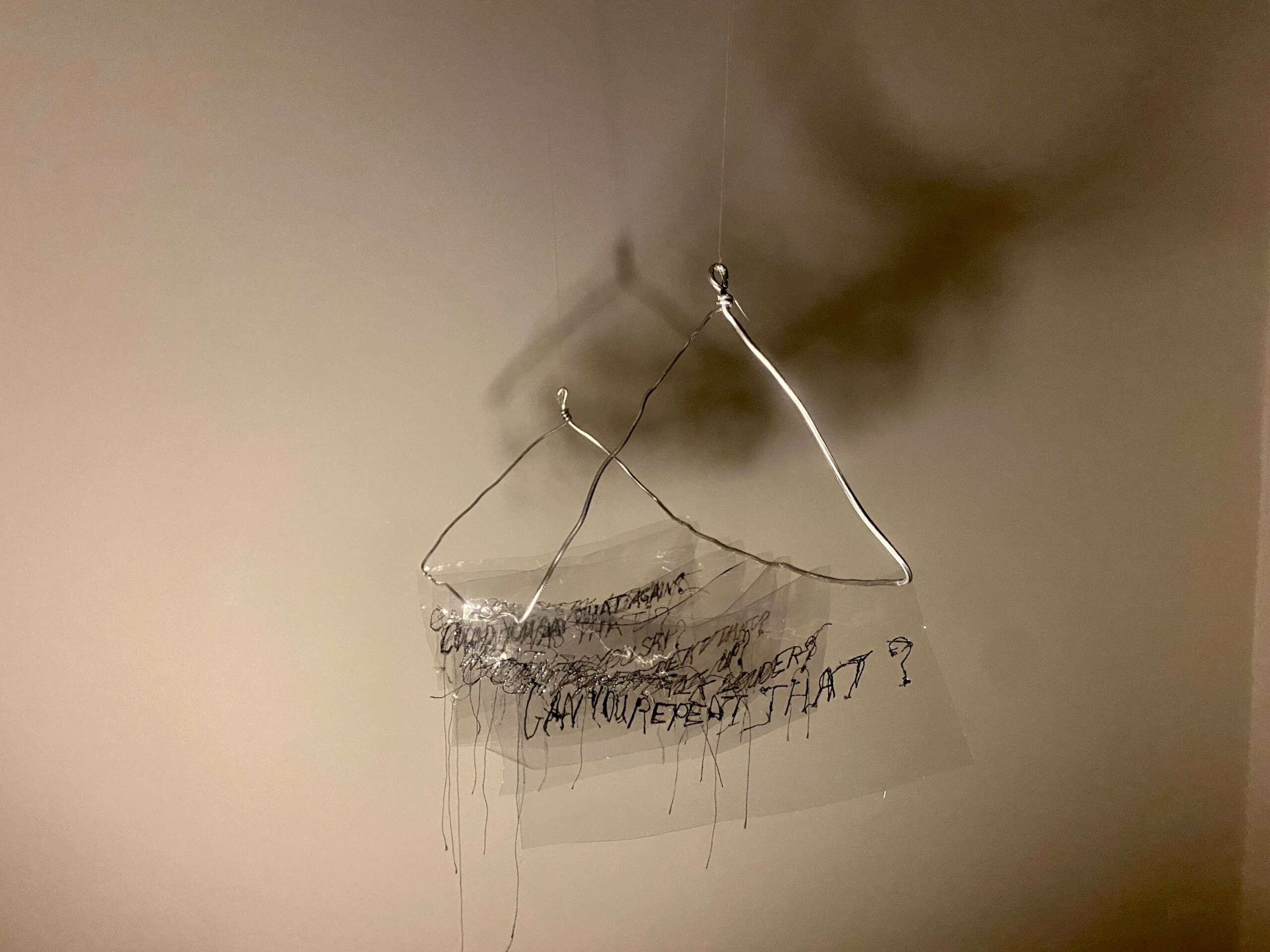
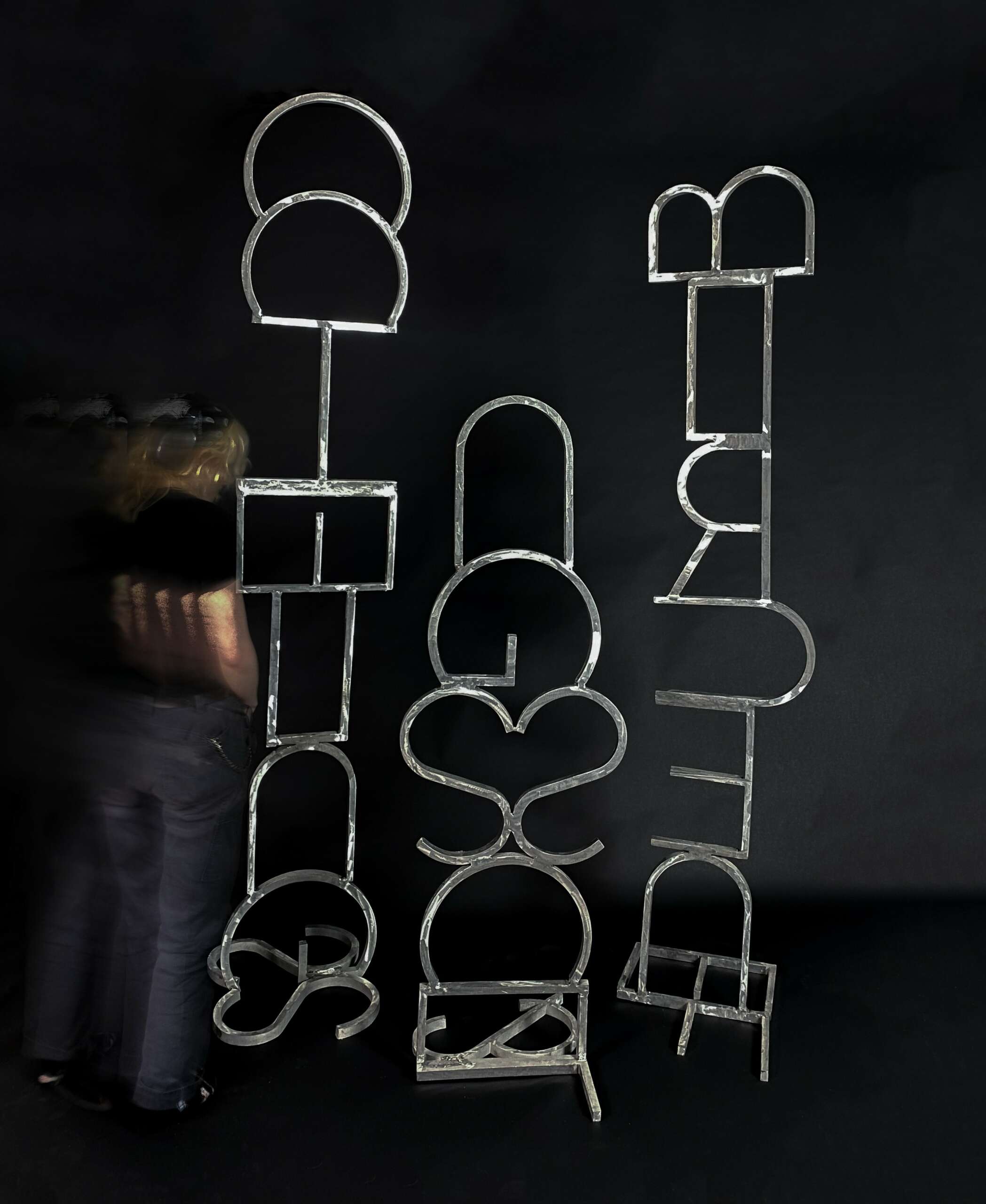
As always, we appreciate you sharing your insights and we’ve got a few more questions for you, but before we get to all of that can you take a minute to introduce yourself and give our readers some of your back background and context?
Hello, I’m Jess Schwarz, an artist and researcher who delves into the complexities of disability, drawing inspiration from personal experiences with deafness, autism, and physical disabilities. A recent graduate of Columbus College of Art & Design, I currently serve as an apprentice studio technician at the Pittsburgh Glass Center.
In the realm of recognition, I am honored to have received the Kennedy Center VSA Emerging Artist Award (2023/2024) and the Gertrude Prize for Art History (2023). My thought-provoking sculptures and installations have graced prestigious venues such as Rayburn House in Washington DC, Wild Goose Creative in Columbus, Ohio, Union Street Gallery in Chicago Heights, Illinois, and Beeler Gallery in Columbus, Ohio, among others.
Beyond my artistic pursuits, I engage in academic research, exploring the enduring impact of the Holy Roman Empire on historical and contemporary Russian politics. My interests also extend to the intersections of religions in the Caucasus Mountain region, the Middle East, and Russia, with presentations at symposiums such as the Southern University of New York Undergraduate Art History Symposium.
In addition to academic endeavors, I actively contribute to curation and art handling, participating in the assembly of various gallery exhibitions. My commitment to nurturing creativity is evident in my community work and non-institutional teaching, where I work with fellow artists, teens, and children. I truly believe collaborative efforts with artists and non-artists alike involve sharing insights and techniques to empower the creative community.
My creative ethos is deeply rooted in my identity as an artist with multiple disabilities, utilizing man-made and synthetic materials to encapsulate the intricate and isolating journey of living with these conditions. Through my work, I convey the sense of otherness accompanying autism and explore the challenges of progressive hearing loss, especially in communication, providing me a sense of catharsis like no other.
The careful selection and manipulation of materials in my art symbolize the tangible barriers surrounding individuals with disabilities, creating a visual language that reflects the complexities of navigating a world often unattuned to diverse modes of experience. Progressive hearing loss, layered upon the canvas of autism, compounds the difficulty of understanding communication—a central theme in my artistic expression.
Transforming intangible aspects of communication into tangible objects, my art becomes a reflection of my experience, where the convergence of disabilities amplifies the challenges of connecting with others. It serves as a profound means of communication, transcending limitations imposed by progressive hearing loss and autism.
My art goes beyond the realm of disability, inviting viewers to engage with and empathize with the nuanced struggles and triumphs depicted in each piece. It becomes a bridge between individuals, fostering understanding and sympathy in ways that traditional modes of communication may fall short. My work is an invitation for everyone to connect, appreciate differences, and collectively embrace a more inclusive and compassionate world.


Looking back, are there any resources you wish you knew about earlier in your creative journey?
I wish I knew more about the world of grants, residencies, fellowships, open calls, and workshops. I had been heavily prepared on how to make artwork in an institutional setting, but I wasn’t aware of how many opportunities there were for growth outside of school. I’ve been super lucky to have the background in writing and analysis that I do to be able to apply for opportunities successfully. But I don’t think many artists even know where to look for these opportunities.
I often find myself returning to websites such as callforentry.org, NYFA, various local art councils for cities I’ve lived in, and most predominantly the powers of Instagram to find opportunities. It takes a lot of searching, a lot of late-nights-into-early-mornings writing, scrimping and saving to afford application fees, learning how to document my work effectively, as well as many rejections on what exactly you learn to say to truly convey your work and your artistic praxis, but what I find to be helpful is looking at artists you admire. What do their artist bios say? What opportunities have they been apart of? What do they focus on in their artists statements? What’s the difference between an artist statement and bio? In addition, I lean a lot on fellow artists in my life, whether that be mentors, professors, previous classmates — I ask what they see in my work, if my writing sounds concise and accurate to what I want to convey, what areas they think I should improve or emphasize. I’ve learned that people are much more willing to help you than you may think they are, and that people want to see you succeed in your artistic career. So don’t be afraid to apply for that residency you think you’re not qualified for, or that scholarship for a class you really want to take. You’re bound to be rejected, but every rejection gets easier, and there are always more years to apply — and the more no’s you hear make the yes’s all the more cathartic.

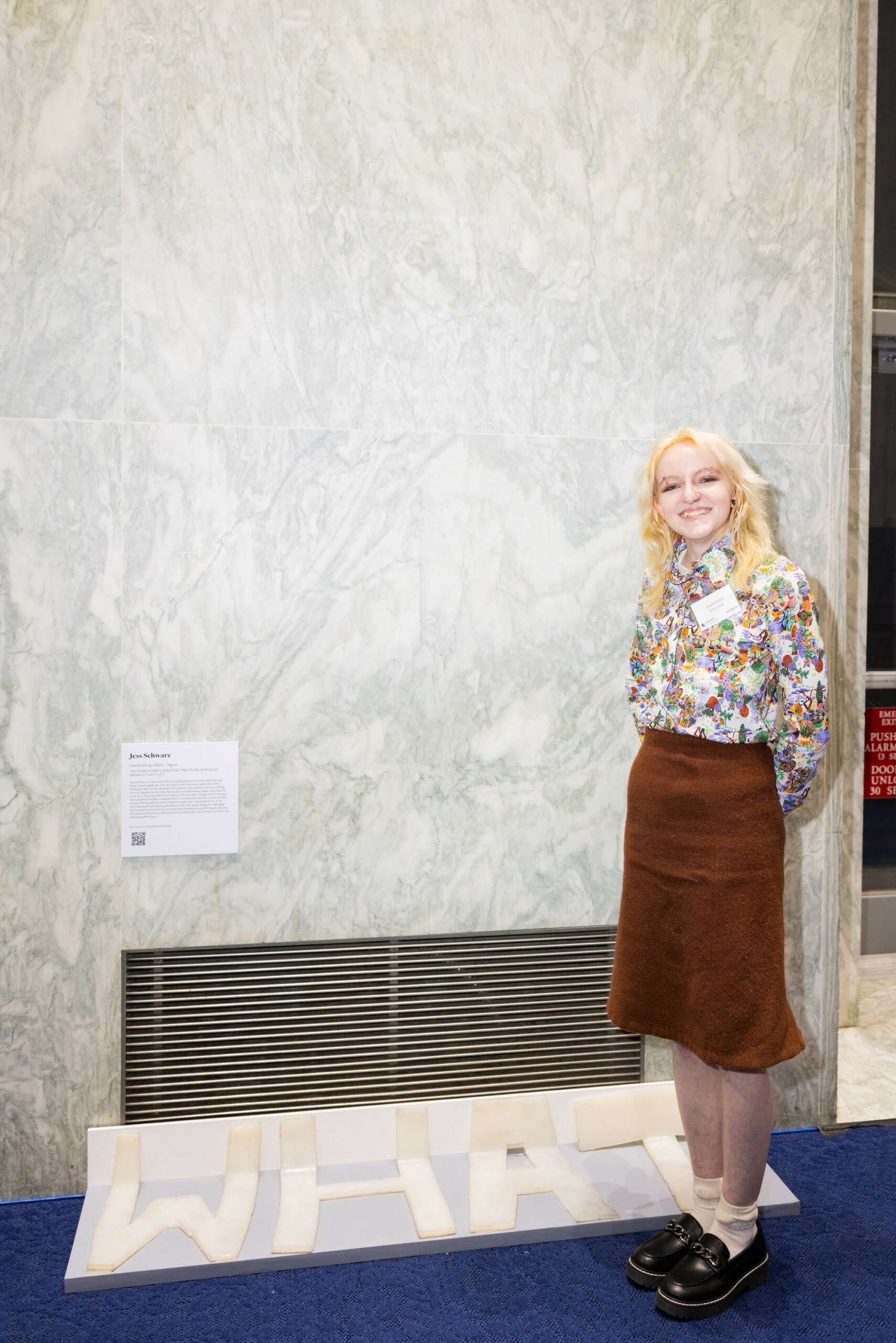
What’s the most rewarding aspect of being a creative in your experience?
For me, it’s the connection with other people. Most of my work comes from a place of feeling alone — being young and disabled will truly make you feel like you’re isolated — but this becomes twofold. On one hand, making work provides me the opportunity to be able to finally get out of my system all the things I’ve had trouble communicating my entire life, bringing me an ultimate sense of catharsis and bringing me one step closer to personal serenity. On the other hand, I’ve found that so many more people relate to the struggles I discuss in my work than I expected. Able-bodied or not, people can relate to the struggles I’ve experiences more than I expected — and every DM, comment, personal conversation, etc. that I’ve had with people who feel like *my* work makes *them* feel heard — feels like the ultimate reward. Human beings are social animals, and in the digital age of instagram, twitter, tiktok, etc we can feel much more alone than we truly are, and if me simply making my work and sharing some photos or videos, or showing work in an exhibition can mitigate some of that feeling of isolation? That’s the ultimate reward to me.
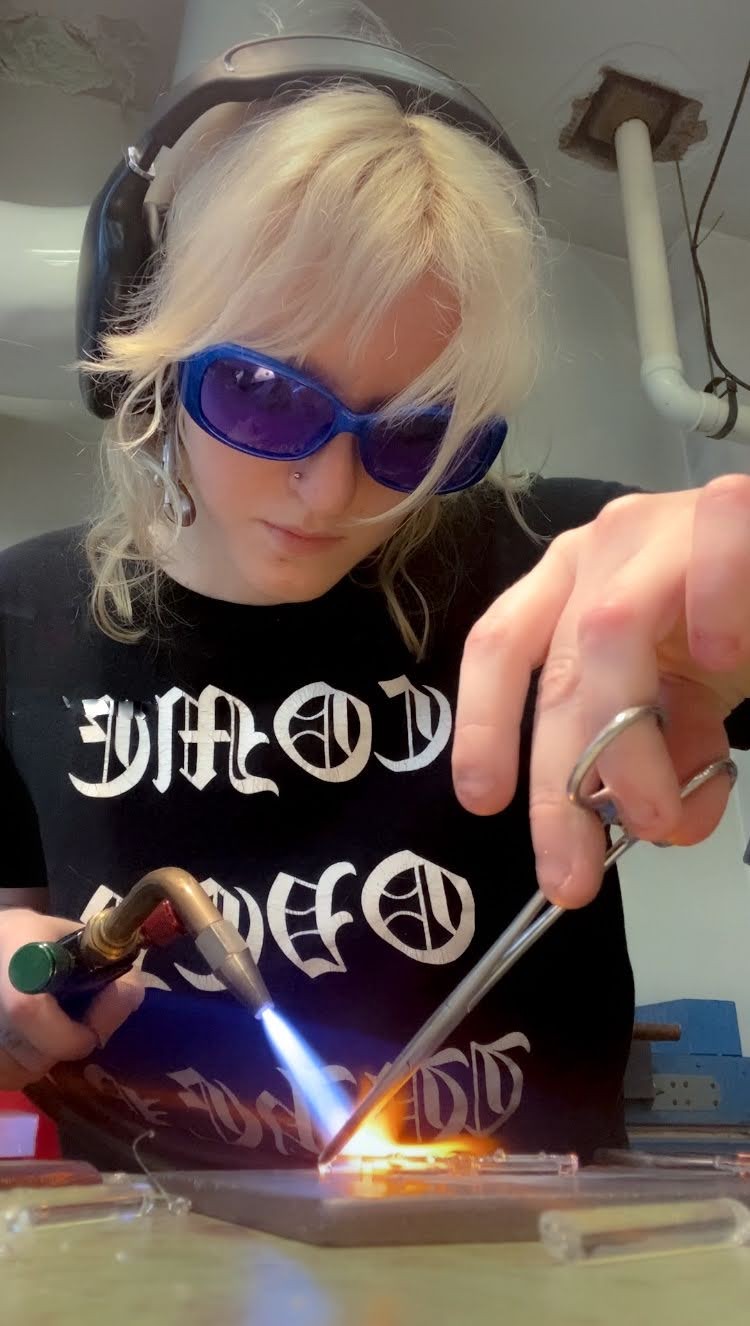
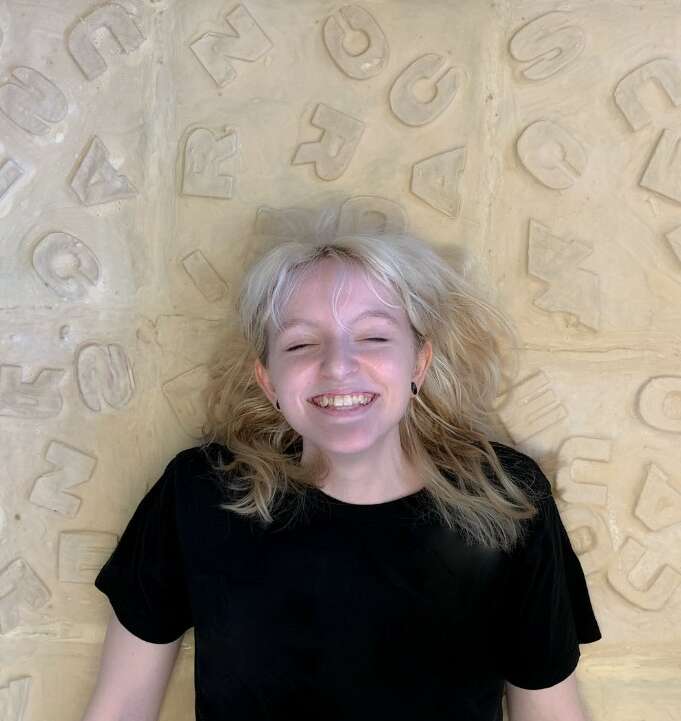
Contact Info:
- Website: jschwarz.squarespace.com
- Instagram: https://www.instagram.com/jessisnotonline/
- Linkedin: https://www.linkedin.com/in/jess-schwarz-0bab05205/
- Twitter: https://twitter.com/jessisntonline
- Other: https://www.tiktok.com/@jessisnotonline
Image Credits
Kasie Kissel, Kennedy Center/Yassine E. Mansouri, Jake Michael Holler, Myself.


